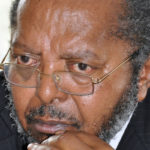Stanbic Bank has realized positive changes in loan applications since it slashed its prime lending rate it was charging borrowers before June 1, 2017.
“We are seeing positive changes in the uptake of loans since we operationised the new interest on June 1,” said a junior worker in the Stanbic’s loans department, who preferred to remain anonymous for fear of reprisal from his seniors.
And when this reporter talked to some customers at the counters, most were pleased with the new offer, calling on other banks to reduce their rates.
“I have been a client of this bank (Stanbic Bank) for a long time and I hope the bank will continue to reduce the interest,” a client who said he was a teacher responded as he prepared his loan requisition papers.
When asked about the new rate, another customer who claimed to be a businessman said: “Banks should reduce their interest rates to at least 15 per cent.”
Stanbic Bank, the biggest local commercial lender by capitalization and assets, cut its lending rate from 19.5 to 19 per cent following the Bank of Uganda reduction of the Central Bank Rate (CBR) to 11 per cent.
In so doing the BoU, which regulates the local financial sector, had hoped that all the 23 commercial banks would also revise their interest rates downwards to attract private sector borrowers who see the current rates as too high for them to absorb.
In the process Bank of India (BOI) and United Bank of Africa (UBA) come second as the cheapest commercial lenders whose loans go at a rate of 20 per cent. NIC Bank and Commercial Bank of Africa are the most expensive, offering rates of 25 per cent and 23.5 per cent, going by the recent figures published by BOU to encourage transparency in the local banking industry.
Research shows that commercial banks in Uganda on average charge 22 per cent interest on loans, a rate many local analysts say is too high for most Ugandans to afford.
The Uganda Bankers Association, an umbrella of 23 commercial banks, recently said it would be difficult for most banks to push down their lending rates to below 20 per cent, given the current bad shape of the economy characterized by the low purchasing power of consumers.
Most banks say the non-performing loans (NPLS) which in 2016 stood at a staggering 1.8 trillion shillings contribute to high interest rates. “Some clients don’t pay as agreed and at the end of it banks lose the money invested and would-be profits,” one banker says, adding that a considerable percentage of the loans is written off as bad debts.
The NPLs were partly responsible for the financial woes of Crane Bank, which ended up being placed under receivership by the BOU. Reports indicate DFCU Bank intends to buy off its former competitor.
The Ugandan government has always slated commercial banks for their refusal to lower interest rates saying high rates limit the growth of the private sector, the reason it intends to launch Islamic banking in the country. Islamic banking mode of business disregards interest payments.
However, other analysts say that government’s continued borrowing from commercial banks through the issuance of treasury bills and bonds leaves banks with little money to lend to the private sector. They have advised government to look for alternative channels of raising money to fund its project, such as widening the tax base.
Recently, the Finance Minister Matia Kasaija said government would continue borrowing from the local private sector, adding that it has provided Uganda Development Bank Shs150 billion for private borrowers.







